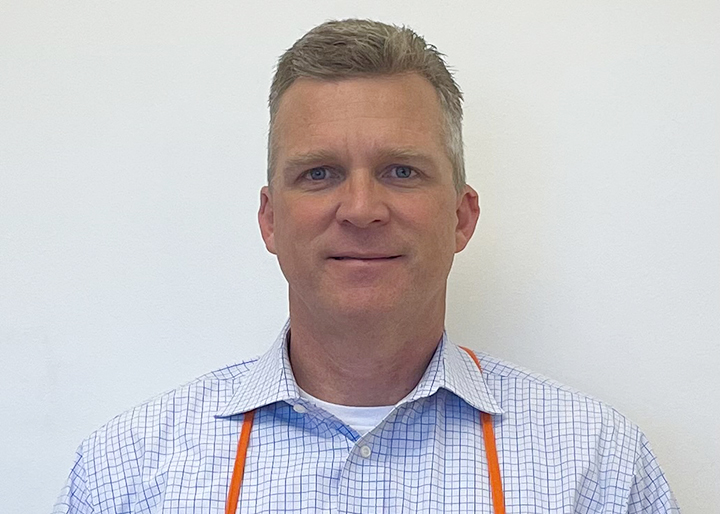ZVN Properties
A Network of Consummate Professionals By Carole VanSickle Ellis When Deanna Alfredo, senior vice president of the ZVN Properties Inc.’s Single-Family Rental (SFR) division, thinks about how the company is evolving with the times and the industry, she can sum up one of the biggest changes with one word: email. The ubiquitous electronic mail communications upon which most of the world has relied for several decades when it comes to communicating quickly as easily about both professional and personal matters is, Alfredo notes, transitioning off centerstage in the SFR space, and it is doing so much more rapidly than many vendors, contractors, and even investors realize. ZVN, however, is ahead of the curve thanks to the company’s dedication to clear and effective communication with both clients and contractors in order to, as the company itself describes it, “provide high-quality service and accurate, on-time results [while] minimizing customer costs.” The advent of the service portal on the client side of the equation has not come without complications on the service side of SFR, Alfredo noted. Today, nearly every SFR provider has its own unique, customized portal designed with the needs of that company’s specific residents and investors in mind. As a result, contractors and other real estate-related service providers may flounder as they navigate a vast array of automated and AI-powered systems. This tough terrain, Alfredo said, is where ZVN really shines. “Nearly all of our clients have technology and portals in place today that require us to go into their systems [vs. the client using a ZVN-developed option] to submit results, photos, and invoices,” Alfredo explained. “That is a very different landscape from even just a few years ago, when most parties in the industry were still relying on email. It has made things very difficult for a lot of service providers, but for us, that is just part of the growth and maturation process of the industry.” Bryan Lysikowski, CEO and co-founder of ZVN, agreed, saying ZVN’s ability to navigate client portals and platforms rather than requiring clients to enter into a standardized ZVN option is one of the things that makes the company stand out in the field. “If you want to survive and thrive in today’s marketplace, you must be heavily technology-enabled,” Lysikowski said. “We are managing a network of professionals all leveraging elements including artificial intelligence, cost estimation tools, and many other technologies, so our clients can rely on us to communicate the status of any asset and also to react quickly to changes in the property.” Unafraid & Unintimidated by Technology in Any Industry ZVN combines cutting-edge technology from multiple industries and sectors in order to gain the best reaction times and results possible for their clients, even if that means diving into industries that might appear to have little to do with real estate on the surface. For example, when temperatures skyrocketed in Texas earlier this year, ZVN leveraged meteorological data and forecasting information in order to prepare for action despite the events occurring over a holiday weekend. “We leverage technology that tells us what regions are likely to be hit by storms or weather events, including extreme temperatures,” Alfredo explained. “We can see these things at a ZIP code level and be prepared to respond.” In the case of extremely high temperatures in Texas, ZVN reached out to their vendor management team, which Alfredo described as “robust,” and challenged the team to contact all ZVN AC vendors in the potentially affected areas in order to assemble a list of at least three names per service region that would be willing to operate on a 24-hour rotation of availability over the long weekend. When units failed under the pressure of the sky-high temperatures, ZVN clients were able to provide fast, effective maintenance to residents who desperately needed access to cooler temperatures. “We went into that weekend knowing that if things went wrong (and they did for many residents), our partnerships with clients, vendors, and residents would effectively get us all through that,” Alfredo said. “We went in with a ‘crystal ball,’ but it took planning and communication to make sure we were all on the same page.” Lysikowski added each client file has a comprehensive asset list indicating where properties are located and what types of events might affect them. “When things like tornadoes happen, we get a ZIP-code level indicator that we can run through a portfolio to let us know what areas are likely affected by the event. This enables us to provide a fast and accurate response. Such a response might include emergency inspections for properties in the affected ZIP codes to check on residents or visual checks on vacant properties,” he said. “A lot of these potential issues are particularly hard on the elderly and families with children, so we make it a policy to always treat these issues with a sense of urgency,” Alfredo concluded. A History of Evolution & Customized Customer Service When Lysikowski founded ZVN just over 20 years ago, he did so in response to the “wild west” element of asset management preceding and during the housing crisis of the mid-2000s. ZVN started out in default services, striving to create order from the chaos that ensued as high volumes of properties plummeted into REO status and, eventually, institutional ownership. “It has been a very interesting journey over the last 20 years,” Lysikowski said. “No matter what area of real estate field services you are in — fixing properties, maintaining them, cutting the grass, etc. — there has been a parallel growth of the SFR industry and that service genre as all the volume hit [the sector].” He described a burgeoning need for services like ZVN, which considers itself a “one-stop-shop” for real estate services, and the emerging demand for centralized, professional, technology-savvy companies to manage services on a national level. “When we entered the industry, there was not a lot of regulation surrounding what we did,” he noted. “Fast-forward 18 years, and you had all
Read More












